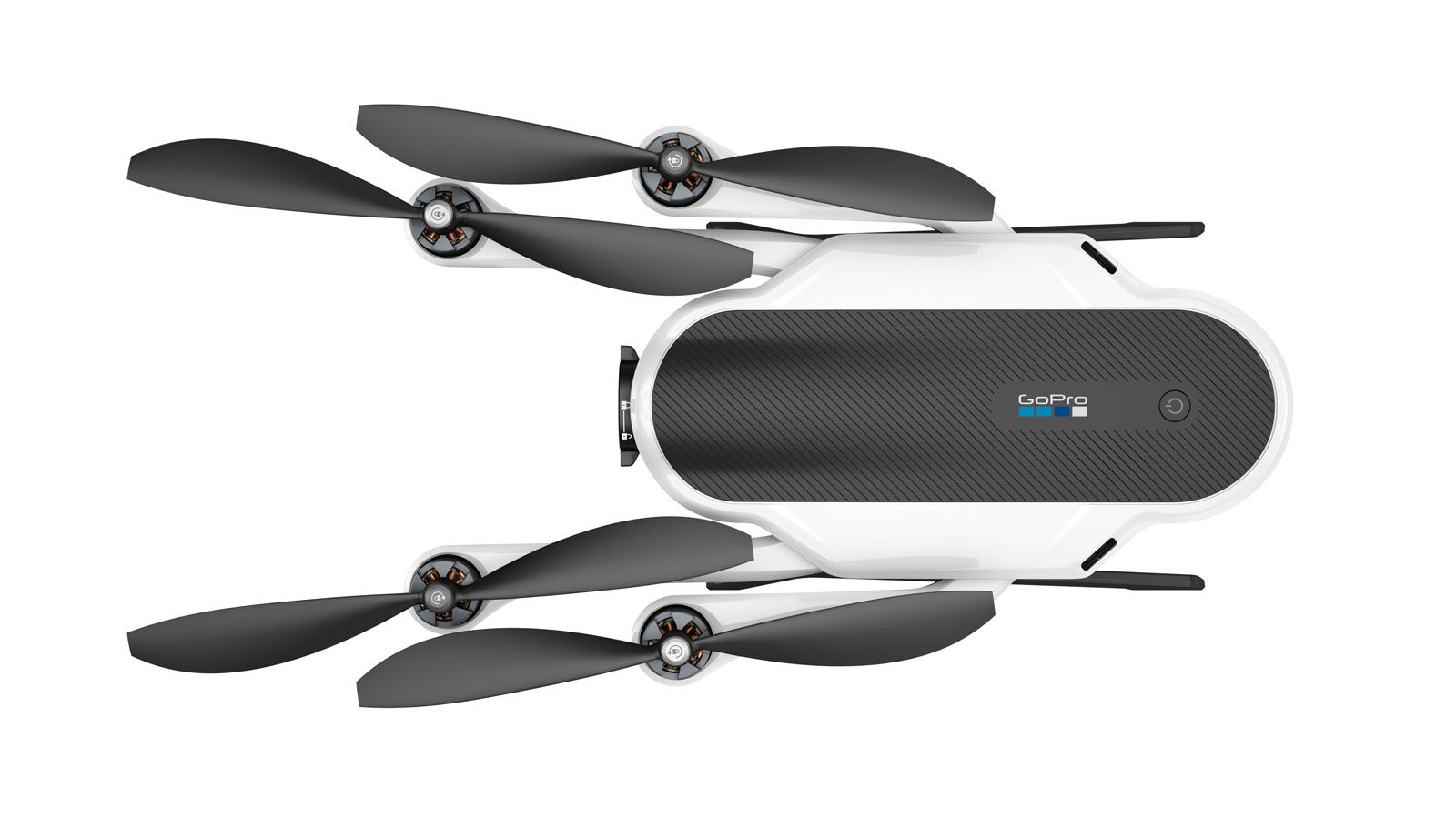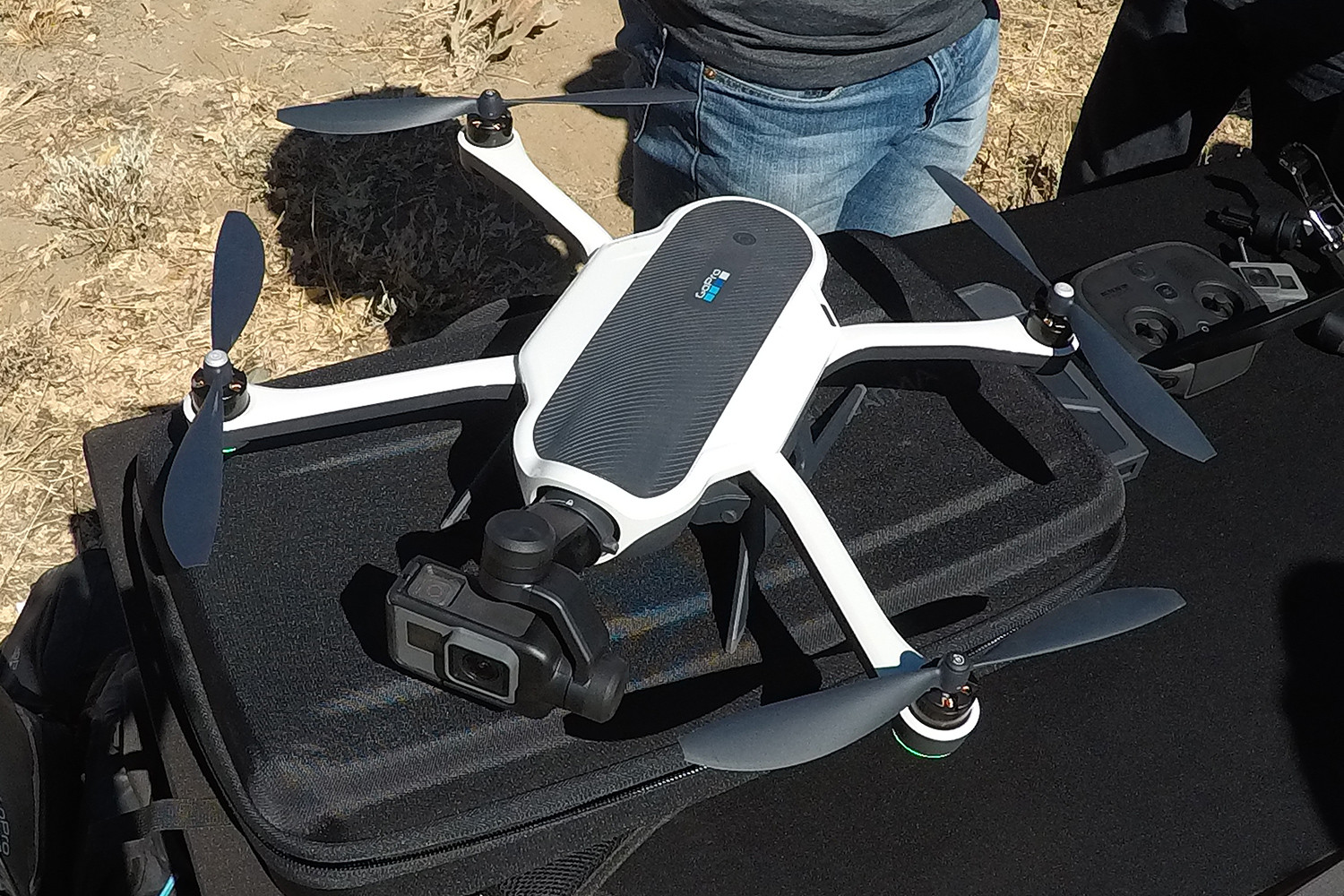Corrected Karma: what is the updated GoPro drone?

In the second half of 2016, GoPro surprised all fans of its products by firing a quadrocopter instead of a familiar camera. It is clear that very few people missed this event, bloggers, experts in Copters and ordinary technology lovers immediately began to test the drone. As it turned out, the device turned out to be far from the best, so reviews of disappointed customers began to appear on the network one by one. And not only did the drone turn out not to be super, it was also defective: in flight, the battery could disconnect itself and then the drone flew like a stone to the ground.
Since drones cannot plan, all this ended sadly. Having learned that the problem is massive, the manufacturer recalled all the devices sold and promised to

Yes, Karma is no longer falling from heaven to earth, but almost all the flaws of the first version of the copter, released in 2016, remained in the updated model. For example, this drone does not know how to automatically follow its owner. The battery life is below average, there are still no sensors that help stabilize the drone and avoid obstacles. Details of the capabilities of the first version of the drone were discussed here . What does Karma have that a copter might like to users?
One of the advantages is the ability to detach the gimbal for the camera, turning it into an excellent portable stabilizer that works with the entire model range of GoPro cameras. Karma is adapted for the cameras of the latest and penultimate versions - Hero 4 and Hero 5. So you can use these devices under water. But this can not be said, of course, about the drone.
')
It can be advised to those users who enjoy surfing, cycling, mountain biking, etc. If you need a drone in order to shoot wonderful views or a kopter, which you want to replace your model two years ago, then you should not count on Karma. There are more interesting competitors, including DJI Mavic.
The portability of the copter is still not up to par. Its legs can be folded, the same applies to the screws, which are simply retracted, to the stowed position. As such, it is easier to transport. However, during transportation, the blades are not protected by anything, which increases the likelihood of their damage. Unsuccessful movement - and you can run for more details.
Comparing with the same folding Mavic Pro, you can see that Karma loses in all respects. The GoPro drone fits in an average backpack (we did some recent reviews of some of them), but the Mavic Pro fits even in a pocket. Moreover, the possibilities of the latter are more extensive, but the weight and dimensions are almost two times less than those of Karma.

On the other hand, Karma is one of the most portable drones on the market, assessed in a similar price range. In the relatively small size of Karma lies one drawback - if larger drones can land on almost any platform, then this copter has to fear a lot, even grass. Some users complain that the screws sometimes deteriorate during planting, damaging the plants at the planting site.
The advantages include the fact that this copter has a rather convenient controller with an integrated display. Here users do without connecting phones - the screen is really built-in. It is bright, the image is clear, the “image” is visible even in the blinding sunlight.
The image transmitted by the drone camera turns out quite good. True, there was no doubt that everything would be fine, because GoPro cameras are really high-quality, not for nothing that they quickly became so popular.
But the lack of sensors to stabilize the position of the drone is a disadvantage. No matter how good the camera is, but the horizon littered is annoying. In the case of Karma, there is a destabilization of the horizontal position during the flight. As a result, the camera image is somewhat oblique. This problem can be solved by setting the suspension, but manually. The drone is not possible to change the position of the camera in flight. If something does not suit you, you have to lower the device to the ground, change everything manually and start again.

But if you use the suspension as a manual camera stabilizer - everything is fine. There is a small fish-eye effect, but, in general, excellent video quality is obtained. The ability to use the gimbal for shooting "with hands" does not belong to the drone's functionality; rather, it is a question of a good configuration of the device. After Karma disappeared from the shelves, GoPro began selling the suspension as a standalone product, naming it Grip. Moreover, the cost of the stabilizer is rather big - $ 299. By the way, DJI has a similar product called
DJI Osmo. True, it is better to use it in a quiet environment, while Grip is more suitable for the same extreme sportsmen that use GoPro cameras.
The connection to the controller is via Wi-Fi, which imposes restrictions on the distance from which the drone can be controlled. The maximum in optimal conditions is one kilometer. For comparison, DJI Mavic can be controlled from a distance of up to seven kilometers. The difference is not that decent, it is huge. As for the broadcast signal, nothing bad can be said here. The signal is clear, the video is transmitted without interference. The drone can automatically return to the take-off point, but there is one problem here - it returns along the shortest path, without repeating the trajectory of movement to the point of maximum distance from the operator. And if there is an obstacle on this way back, the drone will crash into it if the operator does not have time to react. As mentioned above, the copter is not able to automatically respond to obstacles.
In addition, due to the lack of sensors, Karma can move slightly if left the copter in one position, causing it to hang above the ground. And here, too, there is a danger that the device, suddenly changing its position, will bump into something.
The battery charge, according to the developers, should ensure the work of the drone for 20 minutes. But it is in optimal conditions that are rare. In fact, the drone is held in the air for about 18 minutes.
In general, the advantages of GoPro Karma include ease of working with it and relative versatility. There are more weak sides - this is both a small capacity battery and a working distance, plus the absence of a following mode with the inability to track obstacles that may occur on the way. But now at least there is no danger that the copter will suddenly fall.

Karma is not the most successful GoPro experience. This drone, if not primary, then the average, with a small number of functions and a number of drawbacks. If we draw an analogy with smartphones, then this is a “state employee” with limited capabilities. True, the price he has is quite high, so it is better to spend the money on something else. For example, on DJ Mavic Pro, or buy something simpler, including the Hover Camera Passport or ZeroTech Dobby .
The last two devices are portable selfie drones, which can be useful in a lot of cases. Let's go to the resort? Please, a flying selfie robot is always at your service. He will even make a photo of the owner with a smoothie and an electronic cigarette, if needed. Well, or captures the wave while surfing.


Source: https://habr.com/ru/post/402883/
All Articles